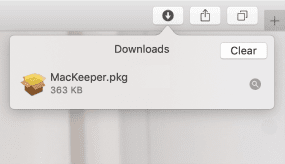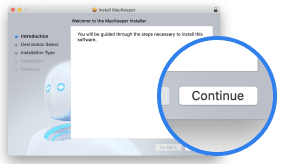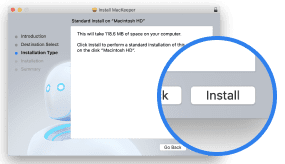You’ve probably noticed how your Mac goes to sleep after a period of inactivity. However, Apple developed more than one power-saving mode for its computers. In this article, we’ll walk you through all of them and show you how to change between them.
In this article, we’ll discuss how to hibernate your Mac and change your Mac’s sleep settings by covering:
- 4 Mac energy-saving modes
- What happens to a Mac while it’s sleeping
- How to change the sleep mode on your Mac
Before we start
Sleep mode management is one way to manage your Mac’s performance, but you need to take care of more than this to ensure your Mac operates at its best. Download MacKeeper to optimize your performance in even more ways.
Mac energy-saving modes
1. Mac sleep mode
Putting a Mac into sleep mode leaves its RAM powered on, which allows the Mac to wake up and get back to work very quickly.
Normally, a Mac automatically goes to sleep after a certain period of inactivity (between one minute and three hours). You can set a preferred timespan before sleep or even completely stop your Mac from sleeping in your Mac’s System Preferences.
This energy-saving mode is used by default for desktop Macs and is called hibernatemode 0.
2. Mac hibernation mode
In this MacBook-only sleep mode, before the Mac is put to sleep, the startup drive saves data from the RAM for safekeeping. The only difference between the sleep and hibernation modes is that hibernation turns off the RAM when a Mac is sleeping, which is why it needs to copy data from it first.
The startup disk restores necessary data to the RAM once you wake up your Mac from hibernation mode again. And that’s why the wake-up time for hibernation is a bit longer than in the sleep and safe sleep modes.
This mode is called hibernatemode 1, and it was used by default for portable Macs released before 2005.
3. Mac safe sleep mode
Unlike the simple sleep mode above, this mode is safe because it copies the RAM contents to the startup drive before your Mac goes to sleep, like in hibernation mode. This allows you to recover your data in case of battery failure, hardware damage, or any other unfortunate events that can affect your Mac.
However, in this mode, the RAM remains powered on while your Mac is sleeping, unlike hibernation mode. And that’s why the wake-up process is still as quick as in the standard sleep mode.
Safe sleep is also called hibernatemode 3 and is set up for portable Macs released after 2005 by default. However, not all laptops support this mode.
4. Mac standby mode
This mode was mainly designed to save battery charge (even though desktop computers also have this mode). Entering standby mode means that the current session is recorded to flash storage (SSD).
Standby is the next stage that comes after a certain time of simple sleep. Apple computers released in 2013 or later go into standby mode after about three hours of sleep, while older Macs enter standby after about an hour of sleep.
What’s fascinating about this mode is that without being plugged in, a MacBook with a fully charged battery can remain in standby mode for up to 30 days.
To exit standby mode do any of the following things:
- Open the MacBook lid and press any button
- Click a mouse or trackpad button
- Plug in a display
What happens to a Mac while it’s sleeping?
Whether you have a desktop or a laptop, putting your Mac to sleep will:
- Put the processor into a low-power mode
- Spin down Apple-supplied hard disks
- Spin down third-party hard disks
- Deactivate video output and turn off, or idle, connected displays
Laptops, however, are a bit different as they need to save energy as much as possible to protect the battery. Therefore, they complete all the previously mentioned stages and also achieve the following states:
- RAM memory is off (in hibernation and safe sleep modes)
- The Ethernet port is turned off. This depends on System Preferences, which can allow the Ethernet port to respond to a Wake on LAN signal (WOL)
- Expansion card slots are deactivated
- The built-in modem, if present, is deactivated
- AirPort functions are off
- The USB ports have limited functions (they respond to the power key on an external keyboard only)
- The optical media drive, if present, spins down
- Audio input and output are off
- Keyboard illumination, if present, is off
- Bluetooth is deactivated. Depending on the Bluetooth preferences, this can allow Bluetooth devices to wake your Mac
These processes significantly save battery usage because computers need much less power while sleeping than while awake.
How to change the sleep mode on your Mac
Unlike a Windows computer, a Mac enters sleep mode automatically and you can't easily choose which sleep mode to use. However, you can manage those modes with the help of the Terminal app.
Find out which sleep mode your Mac uses
To start, you should use Terminal to find out which sleep mode your Mac is currently set to use. Then you can use Terminal to change it to a different mode if you want to.
1. Open the Terminal app from Application > Utilities, or type Terminal into Spotlight
2. In the Terminal window, enter the following script to see which sleep mode is being used:
pmset -g | grep hibernatemode
3. You will see one of the following options:
- hibernatemode 0 (standard sleep)
- hibernatemode 1 (hibernate mode, for pre-2005 portable MacBooks)
- hibernatemode 3 (safe sleep)
- hibernatemode 25 (hibernate mode for post-2005 MacBooks)

Tell your Mac to use a different sleep mode
Although you can change the sleep mode your Mac uses, we don’t recommend you do this, especially for Macs that were released before 2005.
By default, your Mac uses the best sleep mode for its particular hardware, carefully balancing power conservation and data protection. If you change the sleep mode, you could end up using more power while your Mac is asleep. You might even lose your unsaved data.
Even worse, if you change to a sleep mode that is incompatible with your Mac, it may cause a serious problem for the battery. To fix it, you may even need to restore your Mac to factory settings.
That said, if you still wish to change the sleep mode on your Mac, enter the following command into Terminal, replacing X with your preferred sleep mode number from above:
sudo pmset -a hibernatemode X
Read more guides:







